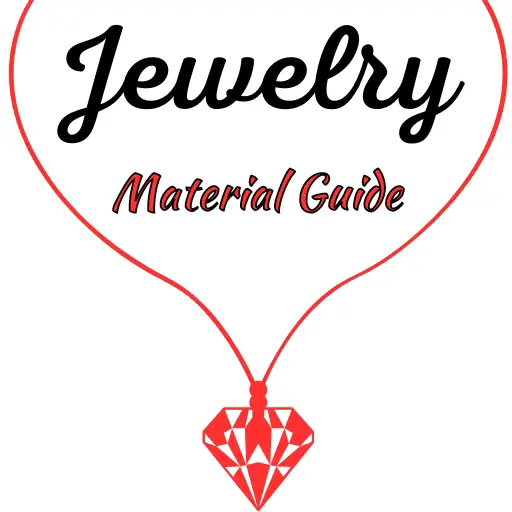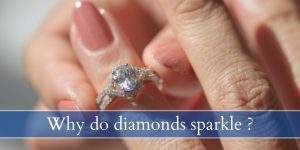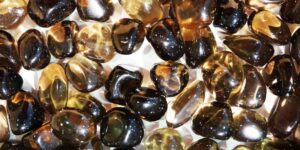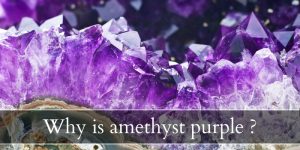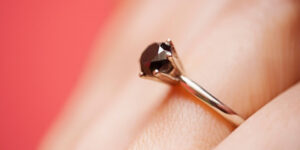When looking for the perfect diamond you’re bound to find all sorts of beautiful stones, minus the one you’re looking for. Maybe the stones are the right color but not the right clarity. Maybe they’re the right clarity and color but are simply too expensive. Or perhaps they are affordable, but only because they are very small diamonds, or smaller than you’d like.
So let’s discuss diamond color vs diamond clarity, as these are two very important aspects of a diamond, but you’d be surprised which of the two is actually more relevant to how well your diamond will perform.
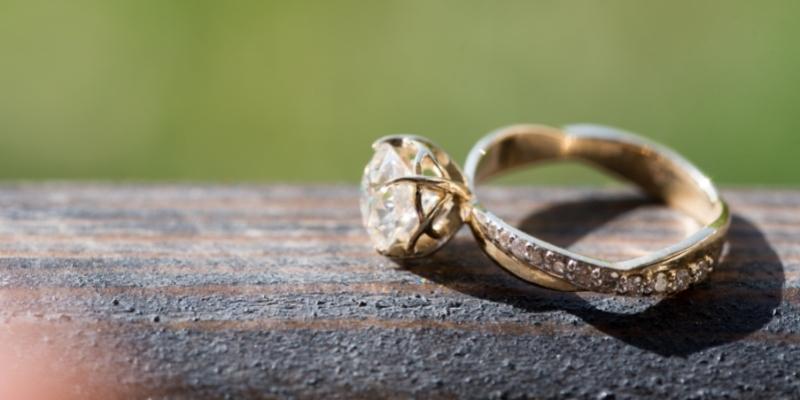
Diamond color vs clarity
Diamond color matters more in the long run than diamond clarity. A diamond’s color is much more noticeable and will impact the overall look of your jewelry or engagement ring, while clarity can be overlooked most of the time. A diamond’s clarity affects its sparkle, but not as much as cut quality, or color. A small inclusion in the diamond will not affect the sparkle as much as poorly aligned facets or a warm tone.
In short, both color and clarity matter, but in the end color impacts the diamond more than clarity. Let’s explain what each of them is, and how they really work in a diamond. Then we’ll get into the nitty gritty of it.
What is diamond color ?
A diamond’s color is dictated by whatever trace elements are present in the crystal structure. For most diamonds this is nitrogen, which gives varying hues of brown/yellow. The more nitrogen in the diamond, the warmer the color. Also the less nitrogen there is, the whiter the diamond looks. No diamond is 100% pure, which is why the color scale starts at D and not A.
Diamond colors range from D to Z, with D the whitest possible diamond with no yellow tint to be seen, and Z the yellowest diamond, and anything past that is fancy color diamond territory. You’re likely familiar with the GIA color grading scale, which is:
- D-F, colorless diamonds
- G-J, near colorless diamonds
- K-M, faint diamonds
- N-R, very light yellow diamonds
- S-Z, light yellow diamonds
Starting with the K grade, diamonds start to look noticeably warm, even without a whiter one for comparison. But, when it comes to diamond color, the actual grade itself matters only on paper.
In real life when you’re wearing the diamond you will see it in its setting, during the day, in office lighting, in bright sunlight, in cloudy weather, and so on. Your diamond will change a lot depending on the lighting and as long as it appears colorless enough to your eyes, the actual color grade won’t matter than much.
You can always influence the appearance a bit, by setting whatever diamond you have in white metal. The result is a slightly whiter diamond with a cooler tone, in some cases almost a whole grade cooler. The reverse is also true, if you set your diamond in yellow gold it may take on a warmer tone, sometimes an entire color grade.
Read also: Does Moissanite Look Fake ?
What is diamond clarity ?
A diamond’s clarity measures the amount of inclusions and possible scratches on the stone. Clarity impacts a diamond’s sparkle if it’s very low, but in most cases it doesn’t matter as much as you might expect. The usual scale people use to measure diamond clarity is the GIA scale, and all of it looks at diamonds under 10x magnification, so keep that in mind.
- FL are flawless diamonds with no noticeable imperfections
- IF are internally flawless diamonds with no inclusions but may have very minor scratches outside
- VVS1-VVS2 are very very slightly included diamonds, with inclusions that are very hard to see
- VS1-VS2 are very slightly included diamonds, inclusions are moderately hard to see
- SI1-2 are slightly included, inclusions are not hard to see and might even be seen with the naked eye
- I1-3 are included diamonds, with clearly noticeable inclusions, with or without magnifications
Diamond clarity is always measured under 10x magnification, so in a way this is where you ca be lax. You won’t be looking at your diamond with a loupe, you’ll be looking with your own two eyes, unaided. So it’s more important to get a diamond that looks clean to you, from every angle, than one that is 100% clean but to your eyes doesn’t look different from another one. Like the difference between IF and VVS1, or VVS1 and SI1.
Both clarity and color can be mitigated by a brilliant cut style
Specifically the round brilliant cut, with radiant and cushion up next. If you’re looking at pears, marquise, oval, and princess you might not get as much leeway.
Why is the round brilliant so great at hiding an entire color or clarity grade ? Because of its symmetrical faceting. A single inclusion is reflected into all the other facets and becomes faded, it won’t be as noticeable. As for the color grade, the diamond lights up quite evenly and disperses a lot of white light, and there is not specific point where color concentrates. It’s kind of like diluting the color or clarity.
The radiant and cushion cut styles are also great at hiding color and clarity issues, but not as much as the round brilliant. It’s mostly to do with the crushed ice effect in both. As for pears, marquise, ovals, and princess the problem lies in color concentration. All 3 of those are elongated shapes, and will show more color towards the tips. The princess had shallow tips with very few facets, which again concentrates color.
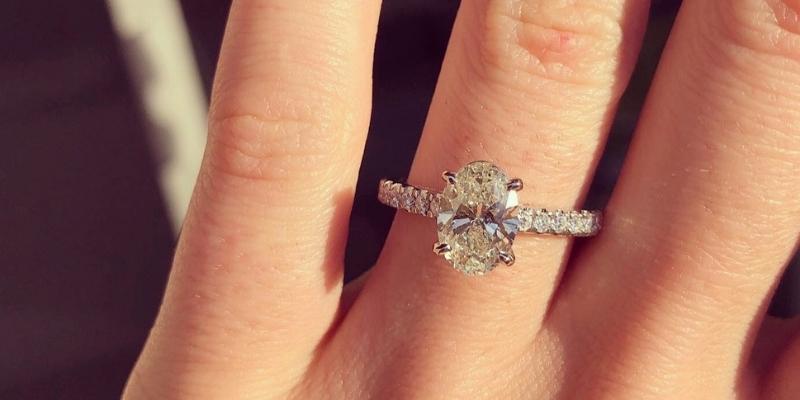
What about step cuts ? These are beautiful cuts but will immediately let you and everyone else know about any color or clarity issues in the diamond. Step cuts do not have many facets to distract or hide color and inclusions. Instead they bare it all. That’s kind of their thing, to showcase just how beautiful and perfect a diamond can be.
But when you’re rocking a J color VS2 emerald cut it will look exactly like a J color, and the slight inclusions in a VS2 may be noticeable even without a loupe. If you’re ever opting for step cut, know that you will have to get a higher grade color and clarity. If you have to sacrifice on something sacrifice on color.
What color diamond is best value ?
Near colorless diamonds (G through J) are the best value diamonds, specifically G and the H diamonds. You’d expect the D-F grades to be the best. In a way they are, but for most people it’s actually the near-colorless grade that gets the most action. Aside from being far more affordable than true colorless, the near colorless diamonds are closer to what most people imagine a diamond looks like: bright white with a very slight warm tint to it.
Not noticeable unless you compare it to a crisp D or E diamond, but still a warmer hue. Ironically D and E diamond are often seen as too white, too cool in color, and thus easy to mistake for moissanite or CZ and thus look a bit fake. This relies heavily on the diamonds already in circulation, the ones people have already bought. Most people own near colorless diamonds, and we’ve explained why here.
In short if you’re looking for a diamond for your ring, paying for a D-F isn’t necessary. You can get better value with a G diamond, without sacrificing on color too much. The next after that is H, which is still pretty white, but you might want to stop there.
What color grade do diamonds show yellow ?
Diamonds with a color grade I or lower will start to show a bit of color, even in a round brilliant. K and lower are distinctly warm diamonds and immediately noticeable. So for brilliant cuts we recommend stopping at an H to be extra safe, possibly a very well cut I if you find one you like.
Of course, this all is up to you and what kind of diamond you’re going for. If you’re going for a warmer, more vintage look the an H or I will look just right. If you’re trying to get a whiter diamond but have a set budget, G is your best friend, since most F diamonds will be about $1,800 more.
So what’s the best color and clarity combination for a diamond ?
Assuming you’re looking at the standard 1 carat round brilliants, you can find a good diamond between F and H in color, and VVS1-VS2 in clarity. It’s a wide margin, we know, but your diamond will also have a cut quality grade, and that is more important than the color or clarity.
Look for a diamond that is within those bounds (F-H, VVS1-VS2) and you’ll definitely find one that is beautiful, has good light return, and is large enough for your budget. Do not skimp on cut quality as that has the biggest impact on sparkle, light return, light leakage, dead areas, and overall look.

I’m the main author for jewelrymaterialguide.com. I started this site after we did tons of research before our wedding and noticed that there is information about rings, jewelry, and so on that is really hard to find on the internet.
